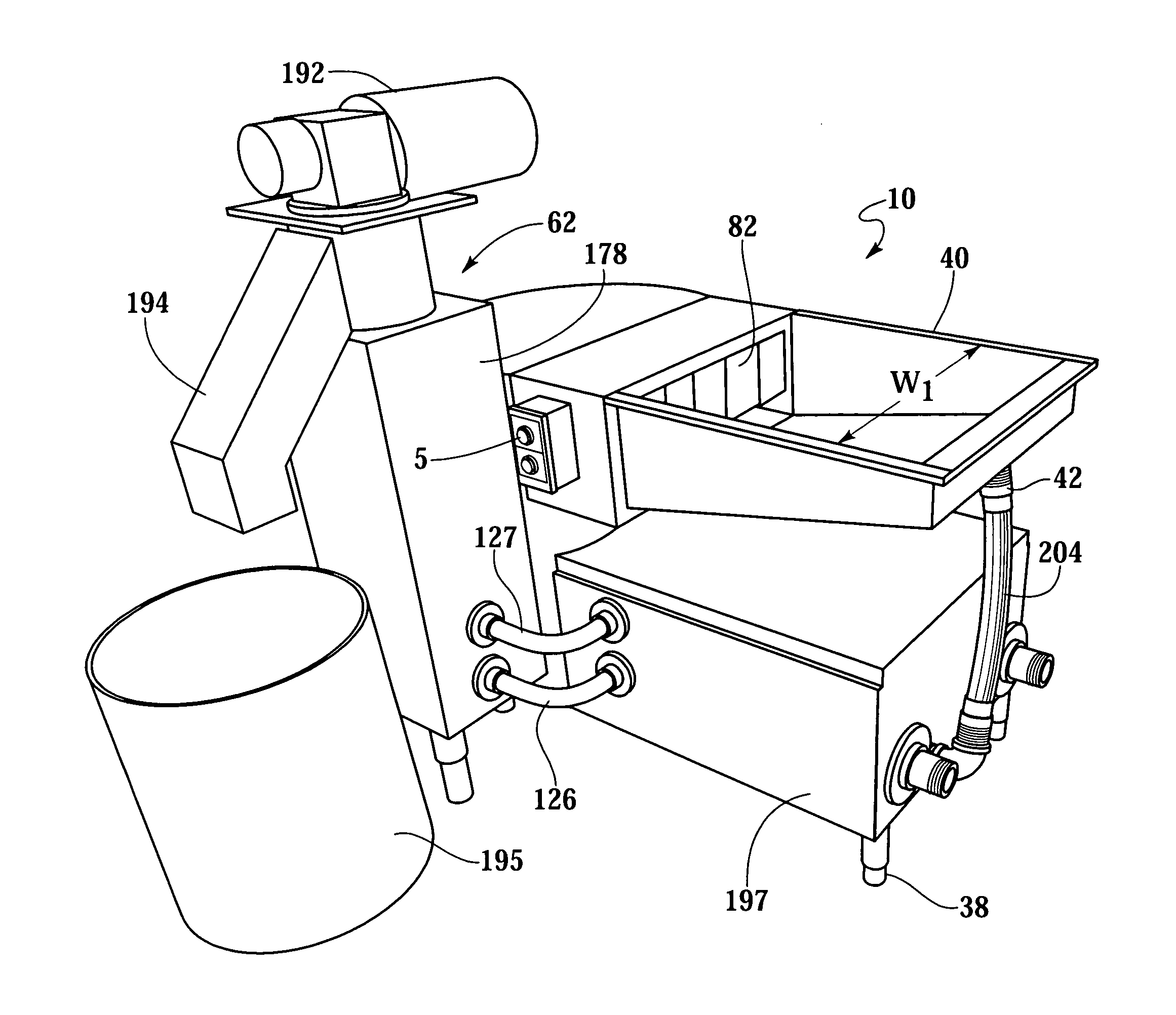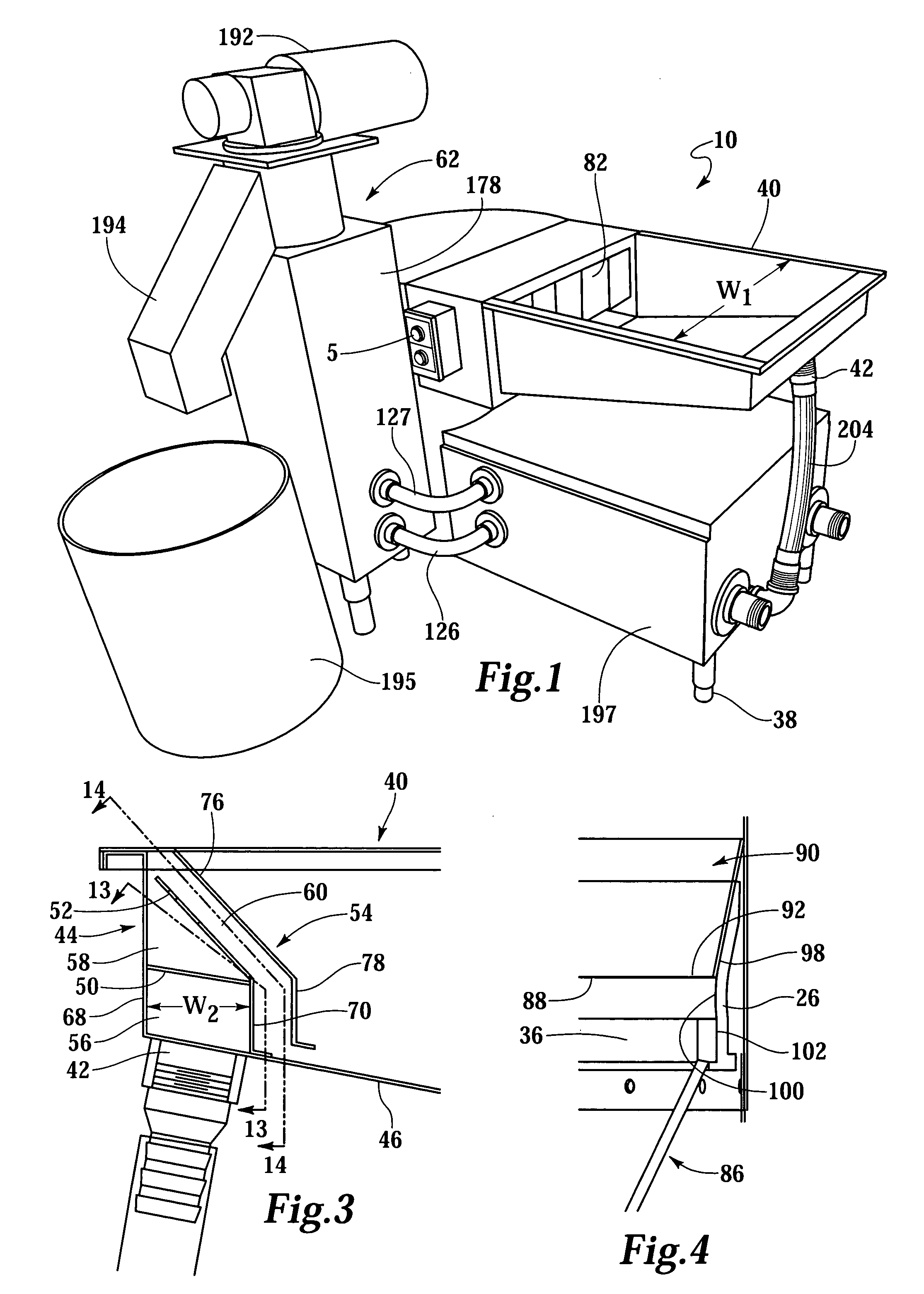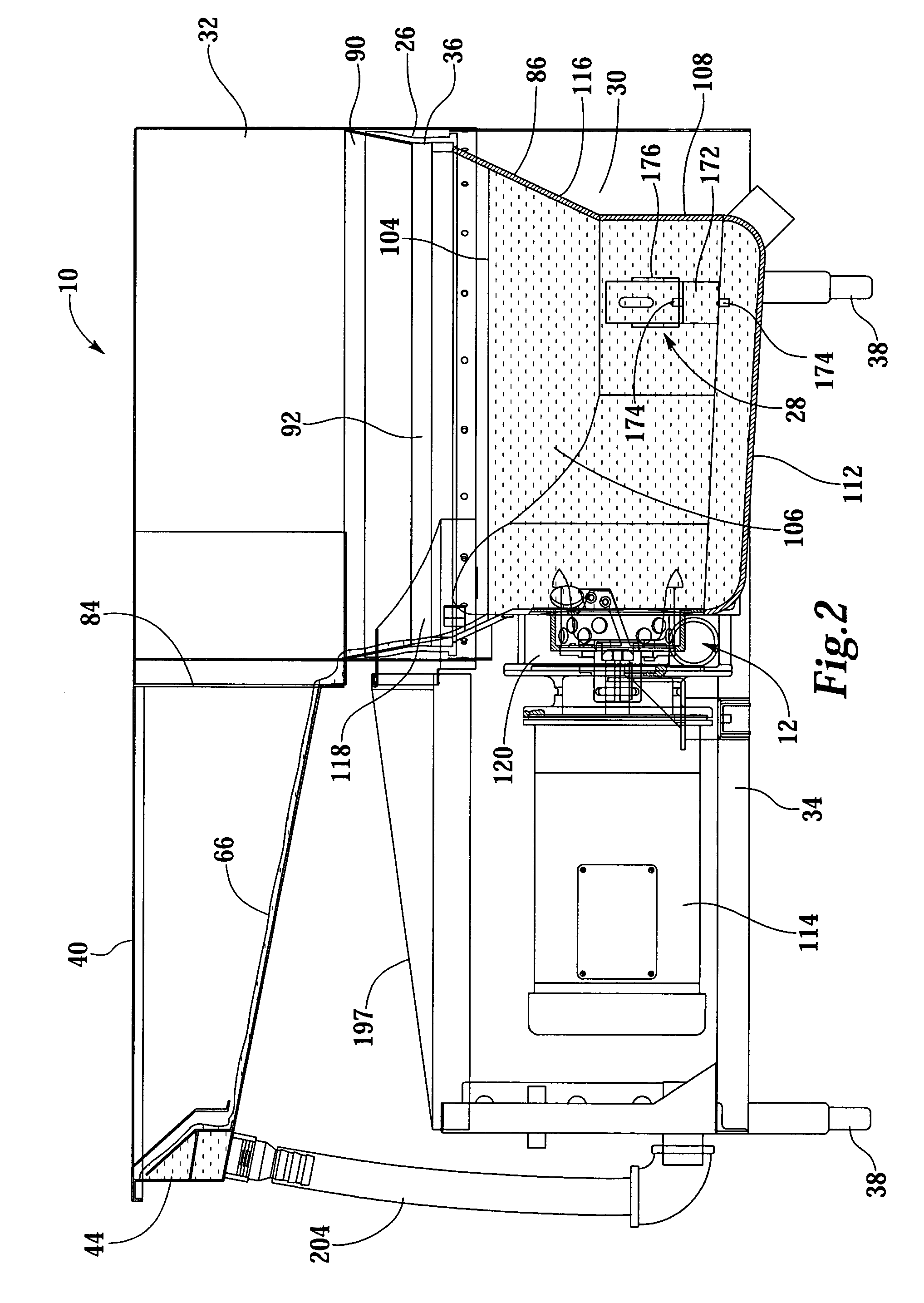Waste pulping system
a pulping system and waste technology, applied in the direction of gas current separation, supporting apparatus, manufacturing tools, etc., can solve the problems of vibration transmission between the pulping tank and its surroundings, the effect of reducing the efficiency of the system
- Summary
- Abstract
- Description
- Claims
- Application Information
AI Technical Summary
Benefits of technology
Problems solved by technology
Method used
Image
Examples
Embodiment Construction
[0040]FIGS. 1 and 2 show overall views of a novel and improved pulping system 10 provided by the present invention for the pulping of solid waste material. The inventive pulping system 10 includes a pulping tank 30 and a novel and improved cutting mechanism 12, as shown in more detail in FIGS. 5, 6 and 7, which includes an impeller 14, a rotating blade 16, a sieve ring 18, stationary blades 20, interrupter bars 22, and pumping vanes 24. Pumping vanes 24 can be modularly changed to provide for different desired pumping capacities. Cutting mechanism 12 is also known as an impeller assembly. Cutting mechanism 12 is connected to a driving motor 114, which provides the energy for grinding waste into a slurry and the energy for pumping the slurry. Motor 114 is activated by a set of controls 5 on pulping system 10, see FIG. 1. Pulping system 10 is supported by a frame 34 and a set of supporting feet 38.
[0041]Pulping system 10 also includes a vibration seal 26 and a set of vibration mountin...
PUM
| Property | Measurement | Unit |
|---|---|---|
| distance | aaaaa | aaaaa |
| diameter | aaaaa | aaaaa |
| diameter | aaaaa | aaaaa |
Abstract
Description
Claims
Application Information
 Login to View More
Login to View More - R&D
- Intellectual Property
- Life Sciences
- Materials
- Tech Scout
- Unparalleled Data Quality
- Higher Quality Content
- 60% Fewer Hallucinations
Browse by: Latest US Patents, China's latest patents, Technical Efficacy Thesaurus, Application Domain, Technology Topic, Popular Technical Reports.
© 2025 PatSnap. All rights reserved.Legal|Privacy policy|Modern Slavery Act Transparency Statement|Sitemap|About US| Contact US: help@patsnap.com



